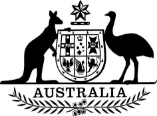Severe active juvenile idiopathic arthritis Initial treatment - Initial 1 (new patient) Must be treated by a paediatric rheumatologist; OR Patient must be undergoing treatment under the supervision of a paediatric rheumatology treatment centre. Patient must not have received PBS-subsidised treatment with a biological medicine for this condition; AND Patient must have demonstrated severe intolerance of, or toxicity due to, methotrexate; OR Patient must have demonstrated failure to achieve an adequate response to 1 or more of the following treatment regimens: (i) oral or parenteral methotrexate at a dose of at least 20 mg per square metre weekly, alone or in combination with oral or intra-articular corticosteroids, for a minimum of 3 months; (ii) oral or parenteral methotrexate at a dose of 20 mg weekly, alone or in combination with oral or intra-articular corticosteroids, for a minimum of 3 months; (iii) oral methotrexate at a dose of at least 10 mg per square metre weekly together with at least 1 other disease modifying anti-rheumatic drug (DMARD), alone or in combination with corticosteroids, for a minimum of 3 months; AND Patient must not receive more than 16 weeks of treatment under this restriction. Patient must be under 18 years of age. Severe intolerance to methotrexate is defined as intractable nausea and vomiting and general malaise unresponsive to manoeuvres, including reducing or omitting concomitant non-steroidal anti-inflammatory drugs (NSAIDs) on the day of methotrexate administration, use of folic acid supplementation, or administering the dose of methotrexate in 2 divided doses over 24 hours. Toxicity due to methotrexate is defined as evidence of hepatotoxicity with repeated elevations of transaminases, bone marrow suppression temporally related to methotrexate use, pneumonitis, or serious sepsis. If treatment with methotrexate alone or in combination with another DMARD is contraindicated according to the relevant TGA-approved Product Information, details must be documented in the patient's medical records. If intolerance to treatment develops during the relevant period of use, which is of a severity necessitating permanent treatment withdrawal, details of this toxicity must be documented in the patient's medical records. The following criteria indicate failure to achieve an adequate response and must be demonstrated in all patients at the time of the initial application: (a) an active joint count of at least 20 active (swollen and tender) joints; OR (b) at least 4 active joints from the following list: (i) elbow, wrist, knee and/or ankle (assessed as swollen and tender); and/or (ii) shoulder, cervical spine and/or hip (assessed as pain in passive movement and restriction of passive movement, where pain and limitation of movement are due to active disease and not irreversible damage such as joint destruction or bony overgrowth). The assessment of response to prior treatment must be documented in the patient's medical records. The joint count assessment must be performed preferably whilst still on DMARD treatment, but no longer than 4 weeks following cessation of the most recent prior treatment. The following information must be provided by the prescriber at the time of application and documented in the patient's medical records: (a) the date of assessment of severe active juvenile idiopathic arthritis; and (b) details of prior treatment including dose and duration of treatment. At the time of authority application, medical practitioners must request the appropriate number of injections to provide sufficient for four weeks of treatment. Up to a maximum of 3 repeats will be authorised. The assessment of the patient's response to the initial course of treatment must be conducted following a minimum of 12 weeks of treatment and no later than 4 weeks from the cessation of that treatment course. If the response assessment is not conducted within these timeframes, the patient will be deemed to have failed this course of treatment in this treatment cycle. If a patient fails to demonstrate a response to treatment with this drug they will not be eligible to receive further PBS-subsidised treatment with this drug for this condition within this treatment cycle. Serious adverse reaction of a severity resulting in the necessity for permanent withdrawal of treatment is not considered as a treatment failure. | 